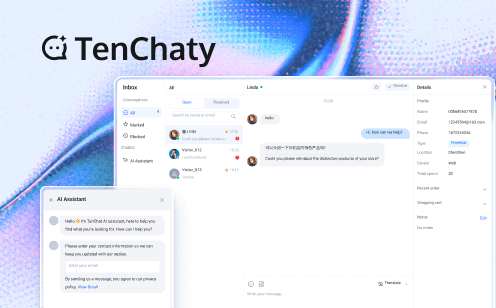Webcasting is a dynamic digital broadcasting method that leverages internet technology to transmit live or pre-recorded audio and video content to a global audience. This versatile communication tool has rapidly gained prominence across various sectors, including corporate meetings, educational seminars, product presentations, and professional training. As remote work and online learning continue to evolve, webcasting has emerged as a critical platform for seamless communication, enabling organizations to transcend geographical limitations and deliver information with unprecedented reach and efficiency.

What is a Webcast?
Webcast is a technology that enables real-time audio and video content transmission via the internet. Unlike traditional broadcasting methods, webcasts harness the internet's extensive reach and accessibility, facilitating global content delivery in real-time. From corporate meetings and product launches to educational lectures, concerts, and sports events, webcasts offer an efficient and economical communication solution.
Emerging in the 1990s, webcasting evolved alongside internet technology, particularly with the widespread adoption of broadband networks. Initially confined to internal corporate training and meetings, webcasts rapidly expanded into education, entertainment, and marketing domains.
The primary strengths of webcasts lie in their interactivity and versatility. Audiences can engage directly with broadcasters through real-time comments, polls, and Q&A sessions, fostering a more immersive and participatory experience. Moreover, webcasts' multi-device compatibility—supporting computers, tablets, and smartphones—enables viewers to access content anytime, anywhere.
Technically, webcasting relies on streaming technology, where encoders transform audio and video signals into digital formats for internet transmission. Content delivery networks (CDNs) are often employed to optimize transmission routes and minimize latency, ensuring a seamless viewing experience.
In essence, webcasting transcends traditional communication barriers, making information dissemination more dynamic and accessible. As technology continues to advance, the scope and significance of webcasts are poised to grow exponentially.
How Does Webcast Work?

Webcasting is a cutting-edge technology that enables real-time audio and video transmission over the internet, involving a sophisticated process of content capture, encoding, distribution, and playback.
The process begins with capturing audio and video using professional devices like cameras and microphones. These analog signals are then digitally encoded using advanced compression algorithms such as H.264 or AAC, which significantly reduce data size while maintaining high-quality transmission.
The encoded digital signals are subsequently routed through streaming media servers, which leverage content delivery networks (CDNs) to ensure global distribution. CDNs strategically cache content across multiple international nodes, optimizing transmission paths and minimizing latency and buffering issues.
On the receiving end, playback software or browser plugins decode and render these signals, presenting seamless audio and video content. Modern webcasting technologies are designed to dynamically adjust resolutions and bitrates, adapting to diverse network conditions and device capabilities.
This sophisticated technological ecosystem enables webcasting to deliver real-time, interactive media experiences, connecting audiences worldwide instantaneously and effortlessly.
Use Cases of Webcasts
Webcasts have revolutionized communication across diverse sectors, offering unprecedented convenience and global reach. In the corporate world, they have transformed traditional business interactions by enabling real-time online meetings, product launches, and training seminars. Companies can now seamlessly connect with global employees and customers, dramatically reducing logistical expenses and time constraints associated with physical events. The interactive features, such as live Q&A sessions and instant polling, further enhance participant engagement and collaboration.
The education sector has particularly benefited from webcast technology. Educators can now deliver live lectures to students worldwide, transcending geographical boundaries and providing flexible learning opportunities. This innovative approach not only democratizes access to educational resources but also accommodates diverse learning styles and schedules.
Entertainment and sports industries have also embraced webcasts, creating immersive experiences for global audiences. Concerts, performances, and sporting events can now be streamed in real-time, allowing fans to enjoy content from anywhere. Interactive elements like live comments and chat functions foster a sense of community and shared experience among viewers.
The versatility of webcasts has fundamentally transformed information dissemination, bridging gaps across business, education, and entertainment, and creating more connected and accessible global experiences.
Benefits of Webcasts
Webcasts have revolutionized information dissemination through their unprecedented global reach. By leveraging internet technology, these digital broadcasts transcend geographical boundaries, enabling real-time content transmission to audiences worldwide. Viewers can seamlessly participate from any location with internet connectivity, democratizing access to information and events.
The interactive nature of webcasts sets them apart from traditional media formats. Advanced platforms integrate dynamic features like live chat, interactive Q&A sessions, and instant polling, transforming passive viewing into an engaging, participatory experience. These interactive elements not only enhance audience engagement but also provide content creators with immediate, valuable feedback and insights.
From a financial perspective, webcasts represent a highly cost-efficient communication solution. Unlike conventional offline events, they dramatically reduce expenses associated with venue rentals, equipment logistics, and personnel travel. Organizations can now reach broader audiences at a fraction of traditional event costs, significantly improving their return on investment.
Moreover, webcasts offer remarkable scalability and adaptability. Whether hosting intimate internal meetings or expansive international product launches, these digital platforms can effortlessly accommodate diverse event requirements, making them a versatile communication tool across industries.
In essence, webcasts have emerged as a powerful, flexible medium that bridges communication gaps, fosters global connectivity, and provides organizations with an innovative approach to sharing information and engaging audiences.
Challenges and Limitations of Webcasts
While webcasts offer numerous advantages, they also present significant challenges in practical applications.
Technical limitations pose the first major hurdle. Webcasting demands high-quality network infrastructure with robust bandwidth and stability. Even minor network delays or interruptions can substantially degrade broadcast quality, resulting in a suboptimal viewer experience. Moreover, achieving seamless audio and video synchronization requires sophisticated hardware and software, with potential issues like image blurriness or audio-video misalignment.
Interactivity represents another critical constraint. Despite platforms offering real-time chat and Q&A features, online communication remains inherently less dynamic and nuanced compared to in-person interactions. Technical barriers and platform restrictions can impede viewers' ability to fully articulate their perspectives, thereby diminishing engagement effectiveness.
Content security and intellectual property protection present additional challenges. The digital nature of webcasts makes unauthorized recording and distribution remarkably easy, exposing content creators to significant risks. Developing robust mechanisms to safeguard intellectual property has become increasingly crucial.
Data privacy emerges as another paramount concern. The proliferation of webcasts necessitates stringent management and protection of user data to prevent potential breaches and misuse.
Despite these challenges, webcasts continue to revolutionize information dissemination. Future advancements, potentially leveraging technologies like augmented reality (AR) and virtual reality (VR), may address current limitations and unlock more immersive, interactive experiences.
Conclusion
Webcasts have emerged as a pivotal tool for modern information dissemination, with their success hinging on several critical factors. Primarily, a robust and stable internet connection is paramount to ensuring high-quality broadcast. Whether hosting corporate meetings or educational seminars, network reliability directly impacts viewer experience, underscoring the importance of selecting a dependable internet service provider.
Equally crucial is the strategic selection of an appropriate webcast platform and technical infrastructure. Today's market offers a diverse range of platforms with unique features, including interactive tools, advanced analytics, and comprehensive security protocols. Carefully matching the platform to the specific event requirements can significantly enhance broadcast effectiveness and audience engagement.
Beyond mere information transmission, webcast technology has evolved into a sophisticated platform for interaction and data-driven insights. Real-time analytics enable organizations to gain deeper understanding of audience preferences and behaviors, facilitating more targeted and responsive content strategies.
From business and education to entertainment, mastering webcast technology can unlock substantial value for individuals and organizations. By embracing continuous learning and practical application, professionals can leverage this dynamic technology to drive innovation and growth in their respective domains.
TRTC provides powerful capabilities for implementing webcasts by offering low-latency interactive live streaming solutions with seamless features. It supports real-time video broadcasting with ultra-low delay, enabling high-quality screen sharing, live recording, and professional audio-visual effects. The platform ensures smooth CDN integration, supports multi-participant interactions, and provides cross-platform compatibility.
With its advanced SDK, TRTC enables content creators to deliver engaging, high-performance webcasts with enhanced audio-visual quality, real-time audience interaction, and robust streaming infrastructure that can adapt to various broadcasting scenarios.
If you have any questions or need assistance, our support team is always ready to help. Please feel free to Contact Us or join us in Telegram.
FAQs
1. Q: What is the difference between a webcast and a podcast?
A: A webcast involves live or recorded content delivered through video and audio, while a podcast primarily consists of audio content, typically offered in a subscription format.
2. Q: How do I choose the right webcast platform?
A: When selecting a webcast platform, consider factors such as its features, user-friendliness, supported devices, cost, and technical support.
3. Q: Is there a limit to the number of viewers for a webcast?
A: Most webcast platforms can support a large number of viewers, but the specific number depends on the technical capabilities and subscription plans of the chosen platform.
4. Q: How can I increase audience engagement in a webcast?
A: Audience engagement can be enhanced through real-time Q&A, interactive polling, and social media interactions.


